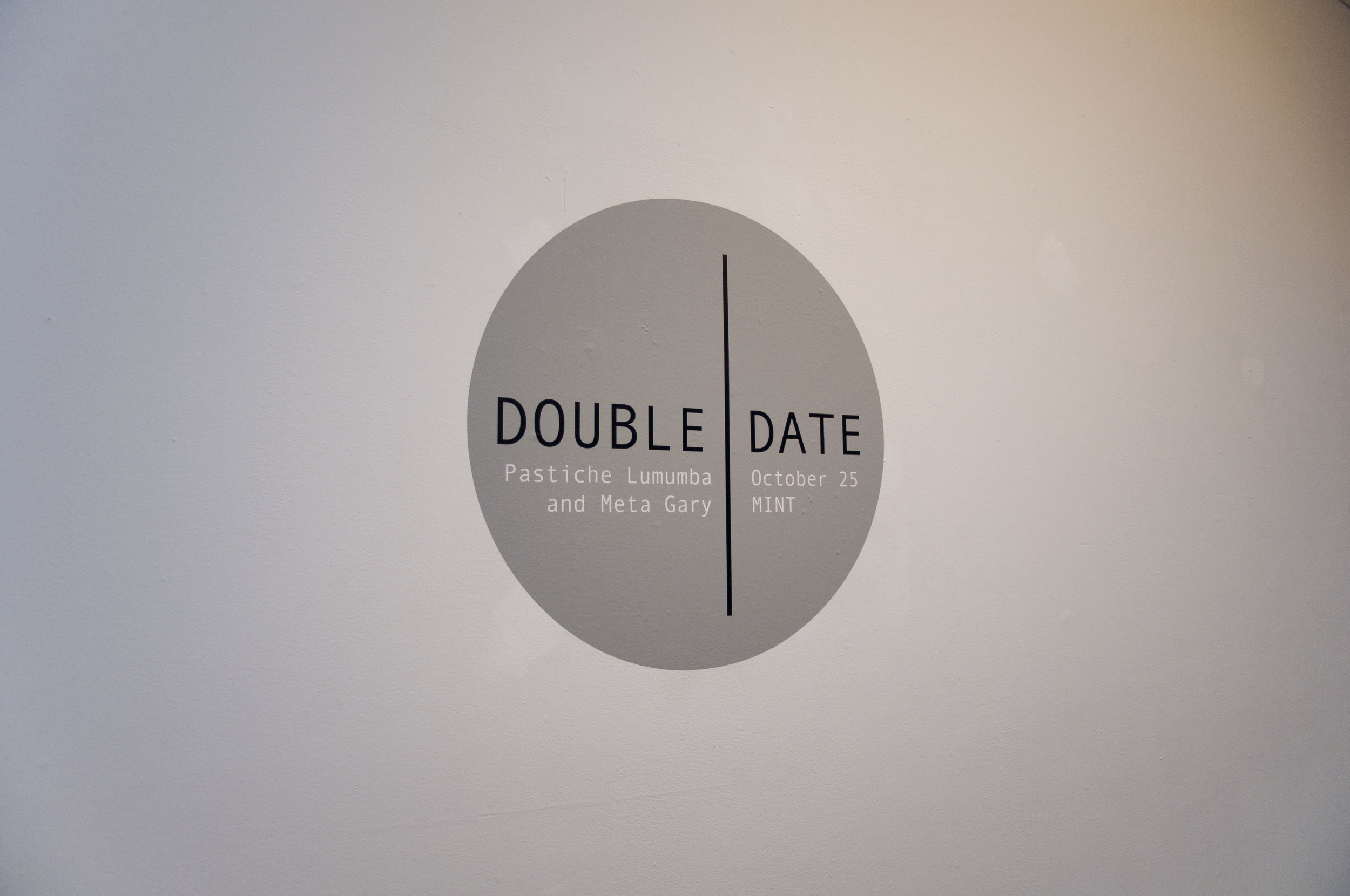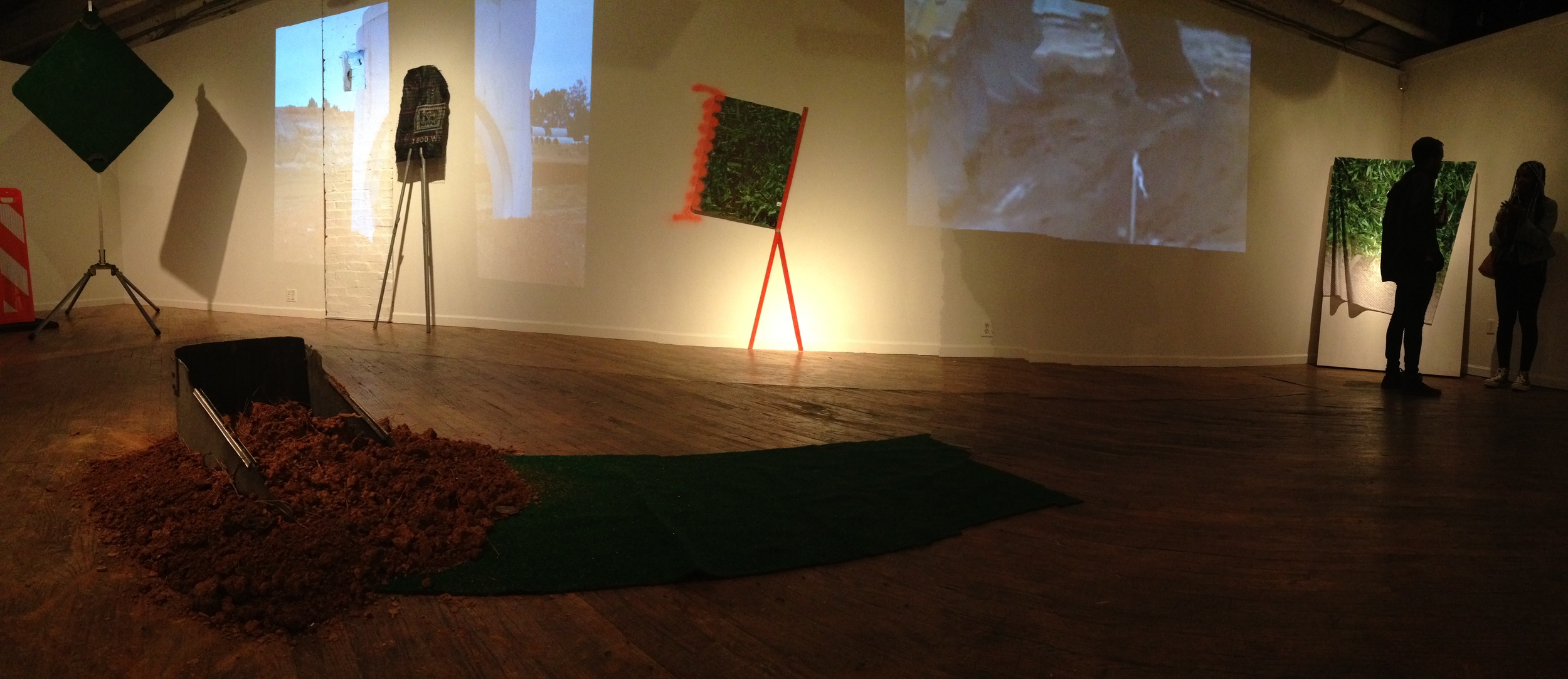















Your Custom Text Here
10.25.14 A one-night collaborative installation with Pastiche Lumumba at MINT
Through sculptural and video projection installation, Suite Grass + Dirt Pile explores the unexpected overlooked aesthetic possibilities of altered natural landscapes.
Meta Gary: A brief foreign landscape emerges while another planned space is being erected. Constructions sites, and in particular, the piles of dirt that appear overnight and often move back and forth across the site, represent an ephemeral state of creation sandwiched between two other more permanent phases of intended developed space. The liminal landscape is rarely considered, as it is short-lived and created as a means to an end - an end that erases any sign of its existence. It is in this in-between that the earthen monuments emerge, disrupting our topographic expectations. Despite fences and glossy signage promising the commerce to come, the dirt piles, however temporary, redefine the existing landscape in a way that invites curiosity and exploration. Their shape and placement ever changing, the dirt pile mimics a slow-moving mammoth beast, both comforting in familiarity and intimidating in colossal size. Often restricted by a brightly colored mesh fence, these constructed monuments loom as precious relics or exotic creatures not to be touched, but only admired as monuments from afar due to their obvious exclusivity. It is their preciousness and impeded access that breeds a need to investigate, document and traverse their fluctuating surface and placement.
Pastiche Lumumba: Grass is a living element of our constructed environment; carpet for outside. The convention of manufacturing and grooming of grass predicates our relationship to it as an aesthetic object rather than a plant. While the saturation of grass IRL represents the supportive vitality of nature, the manipulation of these digital images calls attention to the ubiquitous state of fabrication. The compositions of natural elements, construction tools, and digital interface elements create a visual link between process utility and product aesthetic.
10.25.14 A one-night collaborative installation with Pastiche Lumumba at MINT
Through sculptural and video projection installation, Suite Grass + Dirt Pile explores the unexpected overlooked aesthetic possibilities of altered natural landscapes.
Meta Gary: A brief foreign landscape emerges while another planned space is being erected. Constructions sites, and in particular, the piles of dirt that appear overnight and often move back and forth across the site, represent an ephemeral state of creation sandwiched between two other more permanent phases of intended developed space. The liminal landscape is rarely considered, as it is short-lived and created as a means to an end - an end that erases any sign of its existence. It is in this in-between that the earthen monuments emerge, disrupting our topographic expectations. Despite fences and glossy signage promising the commerce to come, the dirt piles, however temporary, redefine the existing landscape in a way that invites curiosity and exploration. Their shape and placement ever changing, the dirt pile mimics a slow-moving mammoth beast, both comforting in familiarity and intimidating in colossal size. Often restricted by a brightly colored mesh fence, these constructed monuments loom as precious relics or exotic creatures not to be touched, but only admired as monuments from afar due to their obvious exclusivity. It is their preciousness and impeded access that breeds a need to investigate, document and traverse their fluctuating surface and placement.
Pastiche Lumumba: Grass is a living element of our constructed environment; carpet for outside. The convention of manufacturing and grooming of grass predicates our relationship to it as an aesthetic object rather than a plant. While the saturation of grass IRL represents the supportive vitality of nature, the manipulation of these digital images calls attention to the ubiquitous state of fabrication. The compositions of natural elements, construction tools, and digital interface elements create a visual link between process utility and product aesthetic.